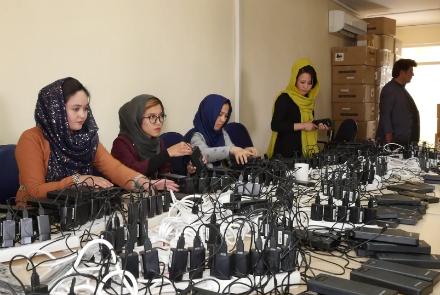The Independent Election Commission (IEC) says that more than 10,000 biometric units are ready for use and that the process of sending the devices to provinces is underway.
The IEC said the devices are being transported by air and overland.
The IEC spokesman Sayed Hafizullah Hashemi said that so far 53,000 election monitors from political organizations, civil society and representatives of candidates have been issued licenses by the commission to monitor the October 20 polls.
“The transfer of biometric devices and voters lists has been done by air and ground to Farah, Badghis, Herat, Zabul, Kandahar, Uruzgan, Helmand and Nimroz provinces. And today (Wednesday), they will be sent to Badakhshan, Paktika, Baghlan, Kunduz, Takhar, Bamiyan, Daikundi and Ghor provinces,” said Hashemi.
The commission has identified 20,053 polling stations across the country for election day.
The devices are being charged, updated with local languages and packaged in order to be sent to provinces.
Some employees from the commission said they have spent day and night working over the past four days due to the amount of work needed to be done to prepare the devices.
“We have charged all the power banks in two weeks and prepared the devices,” said Maryam, an IEC employee.
“The devices are charged first, the system updated and then they are packaged, before being sent to provinces,” said Safia Sajjadi, an IEC official.
Some institutions said they still think some functions of the biometric devices can be misused.
“Fraud is possible with the biometric system at some polling stations. For instance, if they use fingerprints from one person and a picture of another,” said Mohammad Natiqi, head of the political committee of political parties and movements.
“No doubt, the use of the devices can bring transparency to elections but there is also no doubt that the use of the devices can create another crisis,” said Sediqullah Tawhidi, a member of the special commission of election reforms.
The IEC has so far trained 2,000 individuals to use the of biometric devices. The commission has appointed 110,000 employees for election day – half of whom are women.


